Related Research Articles

Ford Madox Brown was a British painter of moral and historical subjects, notable for his distinctively graphic and often Hogarthian version of the Pre-Raphaelite style. Arguably, his most notable painting was Work (1852–1865). Brown spent the latter years of his life painting the twelve works known as The Manchester Murals, depicting Mancunian history, for Manchester Town Hall.
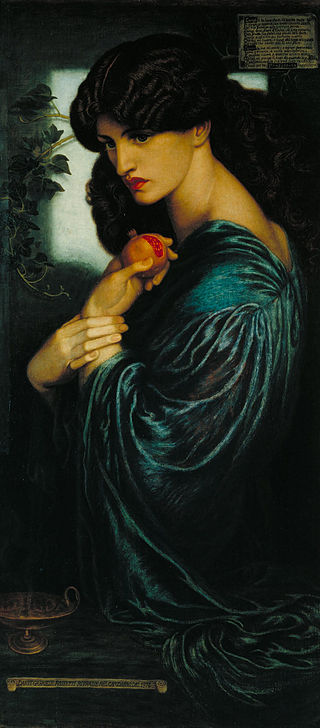
The Pre-Raphaelite Brotherhood was a group of English painters, poets, and art critics, founded in 1848 by William Holman Hunt, John Everett Millais, Dante Gabriel Rossetti, William Michael Rossetti, James Collinson, Frederic George Stephens and Thomas Woolner who formed a seven-member "Brotherhood" partly modelled on the Nazarene movement. The Brotherhood was only ever a loose association and their principles were shared by other artists of the time, including Ford Madox Brown, Arthur Hughes and Marie Spartali Stillman. Later followers of the principles of the Brotherhood included Edward Burne-Jones, William Morris and John William Waterhouse.

Gabriel Charles Dante Rossetti, generally known as Dante Gabriel Rossetti, was an English poet, illustrator, painter, translator, and member of the Rossetti family. He founded the Pre-Raphaelite Brotherhood in 1848 with William Holman Hunt and John Everett Millais. Rossetti inspired the next generation of artists and writers, William Morris and Edward Burne-Jones in particular. His work also influenced the European Symbolists and was a major precursor of the Aesthetic movement.
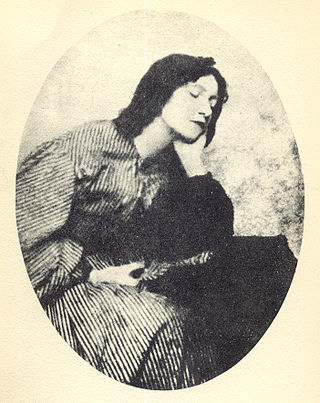
Elizabeth Eleanor Siddall, better known as Elizabeth Siddal, was an English artist, art model, and poet. Siddal was perhaps the most significant of the female models who posed for the Pre-Raphaelite Brotherhood. Their ideas of female beauty were fundamentally influenced and personified by her. Walter Deverell and William Holman Hunt painted Siddal, and she was the model for John Everett Millais's famous painting Ophelia (1852). Early in her relationship with Dante Gabriel Rossetti, Siddal became his muse and exclusive model, and he portrayed her in almost all his early artwork depicting women.

Frederic George Stephens was a British art critic, and one of the two 'non-artistic' members of the Pre-Raphaelite Brotherhood.
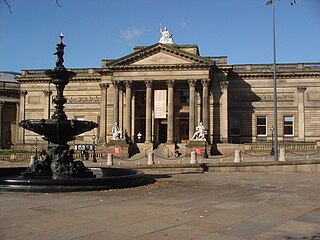
The Walker Art Gallery is an art gallery in Liverpool, which houses one of the largest art collections in England outside London. It is part of the National Museums Liverpool group.

Gabriele Pasquale Giuseppe Rossetti was an Italian nobleman, poet, constitutionalist, scholar, and founder of the secret society Carbonari.
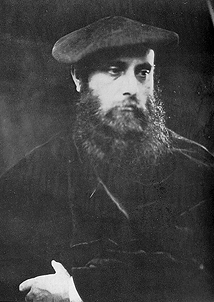
William Michael Rossetti was an English writer and critic.
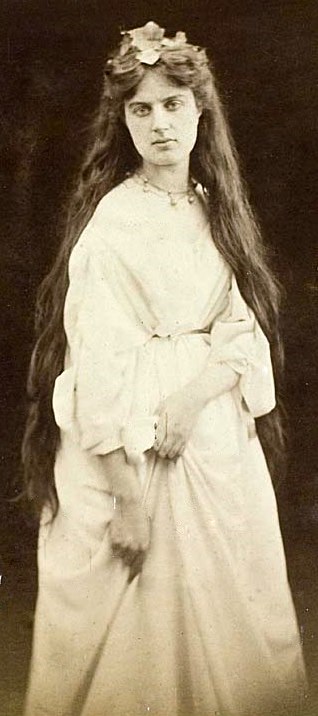
Marie Stillman was a British member of the second generation of the Pre-Raphaelite Brotherhood. Of the Pre-Raphaelites, she had one of the longest-running careers, spanning sixty years and producing over one hundred and fifty works. Though her work with the Brotherhood began as a favourite model, she soon trained and became a respected painter, earning praise from Dante Gabriel Rossetti and others.
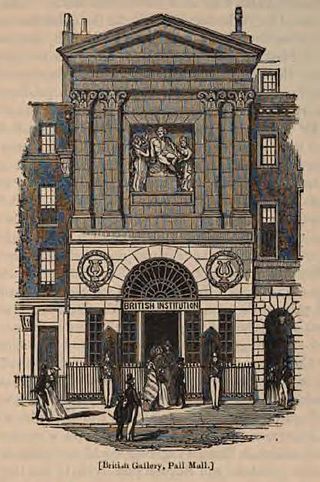
The British Institution was a private 19th-century society in London formed to exhibit the works of living and dead artists; it was also known as the Pall Mall Picture Galleries or the British Gallery. Unlike the Royal Academy it admitted only connoisseurs, dominated by the nobility, rather than practising artists to its membership, which along with its conservative taste led to tensions with the British artists it was intended to encourage and support. In its gallery in Pall Mall the Institution held the world's first regular temporary exhibitions of Old Master paintings, which alternated with sale exhibitions of the work of living artists; both quickly established themselves as popular parts of the London social and artistic calendar. From 1807 prizes were given to artists and surplus funds were used to buy paintings for the nation. Although it continued to attract members and visitors, in 1867, when the lease on its quarters expired, instead of renewing the society wrapped up its affairs.

Alexander Munro was a British sculptor of the Pre-Raphaelite movement. He concentrated on portraiture and statues, but is best known for his Rossetti-influenced figure-group Paolo and Francesca (1852), which has often been identified as the epitome of Pre-Raphaelite sculpture.
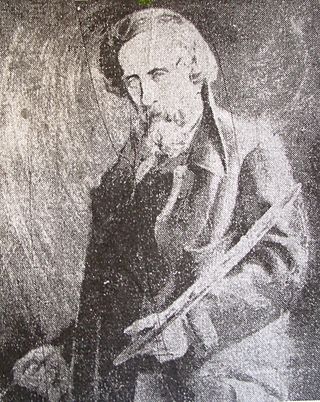
Henry Mark Anthony was an English landscape artist, often favourably compared to John Constable by critics. He exhibited at many major art institutions and travelled widely, being credited with introducing the en plein air style of painting to Britain.
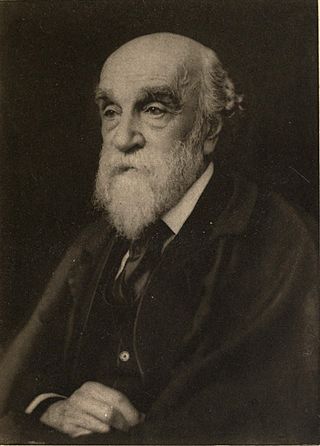
Lowes Cato Dickinson was an English portrait painter and Christian socialist. He taught drawing with John Ruskin and Dante Gabriel Rossetti. He was a founder of the Working Men's College in London.

Peter Paul Marshall was a Scottish civil engineer and amateur painter, and a founding partner of the decorative arts firm Morris, Marshall, Faulkner & Co.

Emma Sandys was a British Pre-Raphaelite painter.

Ecce Ancilla Domini, or The Annunciation, is an oil painting by the English artist Dante Gabriel Rossetti, first painted in 1850 and now in Tate Britain in London. The Latin title is a quotation from the Vulgate text of the first chapter of the Gospel of Saint Luke, describing the Annunciation, where Mary accepts the message brought to her by the Angel Gabriel that she would give birth to a child (Jesus) by God.
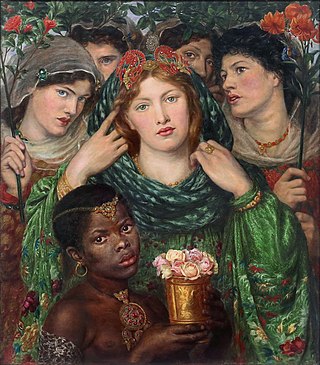
The Beloved is an oil painting on canvas by the English artist Dante Gabriel Rossetti (1828–1882), now in Tate Britain, London. Rossetti signed his initials and the date as "1865-6" on the bottom left of the canvas. It depicts the bride, or "beloved", from the Song of Solomon in the Hebrew Bible as she approaches her bridegroom, with her attendants.
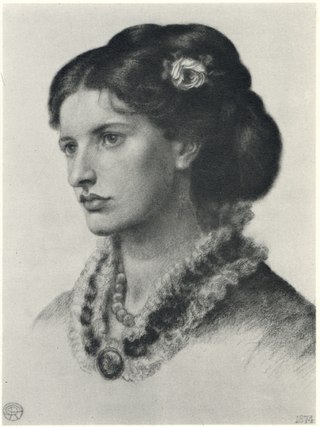
Lucy Madox Brown Rossetti was a British artist, author, and model associated with the Pre-Raphaelites. She was married to the writer and art critic William Michael Rossetti.

The Girlhood of Mary Virgin is an 1849 oil on canvas painting by the Pre-Raphaelite Brotherhood painter Dante Gabriel Rossetti, measuring 83.2 by 65.4 cm and now in the collection of Tate Britain, to which it was bequeathed in 1937 by Agnes Jekyll. It was his first completed oil painting and is signed "Dante Gabriele Rossetti P.R.B. 1849". He first exhibited it at the 'Free Exhibition' at the Hyde Park Corner Gallery.
Christopher John Eldon George Firmstone is a British graphic designer and visual artist. His work as a designer is known by a number of art galleries in London, where his commissions include designs for exhibition posters and the design of rooms for the display of artworks, most notably at the Victoria and Albert Museum. His own artworks have been exhibited in London and New South Wales, Australia, and a selection of his architectural photographs are held in the Courtauld Institute of Art Conway photographic library in London.
References
- ↑ John Greenacombe (Ed.). Survey of London, volume 45: Knightsbridge
- ↑ Pamela M. Fletcher. Creating the French Gallery: Ernest Gambart and the Rise of the Commercial Art Gallery in Mid-Victorian London
- ↑ Delia Gaze. Dictionary of Women Artists, Volume 1 (Routledge, 1997) p. 82.
- ↑ D G Rossetti (Southgate Green Association).
- ↑ Frank Rutter. Dante Gabriel Rossetti, painter & man of letters (London: G. Richards) pp. 40–41.
- ↑ Chambers's Edinburgh Journal, No. 444 Volume 18, New Series, 3 July 1852.